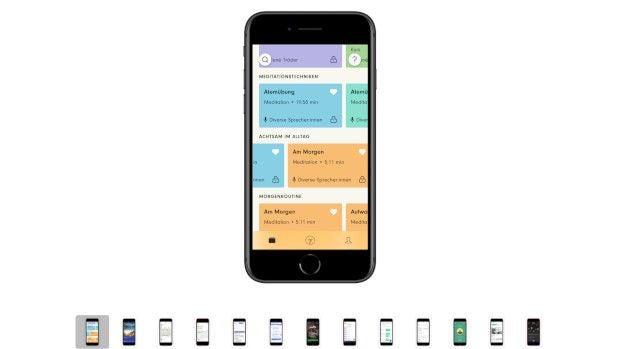3 techniques that will help you immediately
Stress at work is often avoidable – through discipline and good planning, for example. But there are also moments when professionals are on the verge of losing their heads. For example, when two new tasks crop up spontaneously, the phone rings while on a tour and the day-care center is getting closer and closer. When this happens, pressure and hectic pace are often unavoidable.
But even such situations can be defuse by professionals with a few tricks from behavioral therapy, says Utz Niklas Walter vom Institute for Occupational Health Advice (IFBG) in Constance. The founder of sleep portals Letsleep.de recommends three techniques in particular: the catastrophe scale, the brooding chair and the quiet word.
Utz Niklas Walter: “Employees should not underestimate stress at work.” (Photo: IFBG)
t3n: The greatest stressors in the workplace include deadline pressure, a bad working atmosphere and constant availability. Do you have to learn to come to terms with such pressures these days, or should you, as a working person, just run away?
Utz Niklas Walter: In any case, one should not make too many compromises. The high demand for qualified specialists meanwhile allows many working people to choose their job carefully. Employers know this too and have done a lot in recent years to protect employees from job stress. Exciting measures have been developed, from health-related flash surveys to the training of managers to become health ambassadors and the accessibility code. A completely new approach is the creation of so-called feel-good cards. Every employee writes down how they would like to work or when and via which channels they would like to be contacted. These feel-good cards are then distributed within the team – and at some point also lived as far as possible.
t3n: Can you name prominent examples where these feel-good cards are in use?
There are no prominent examples here. We initially developed and implemented this approach ourselves in our company. It remains to be seen to what extent the feel-good cards can also be implemented in larger organizations, since there are more restrictions here. From our point of view, however, it is an approach that is also interesting for team or group leaders in large companies.
t3n: What consequences can negative stress have on us?
If I don’t feel comfortable at work or if I’m too stressed, it has a significant impact on my health and job satisfaction. Productivity drops and internal resignation can quickly occur. Of course, all of this is not what employers want.
t3n: Sport is one of the best ways to reduce stress. Now, not everyone in the office can take a jog break. What techniques can you recommend for doing something immediately?
Exercise is a great way to relieve stress. However, it does not address the causes of stress. Things like the high schedule density, the ongoing conflict with my colleague or the lack of appreciation from my boss play a role here. I can reduce some of these stressors myself, with some I need the support of my employer. However, behavioral therapy techniques such as the catastrophe scale or the brooding chair can help to deal with stress better and not to take it with you after work or to bed.
t3n: How exactly do these techniques work? And how much practice does it take to learn them?
You can use the catastrophe scale immediately. It helps you to classify problems and worries more realistically so that you don’t get stressed in the first place. To do this, imagine a scale from one – the smallest possible problem, such as losing a one-euro coin on the street – to ten – the largest possible problem, such as a death in the family. If you get really upset about an e-mail from your colleague again in the future, you classify this supposed problem on your personal catastrophe scale. And you’ll quickly find that there’s actually not too much reason to get upset about it.
t3n: What’s up with the brooding chair?
The brooding chair helps you to stop carrying problems and worries with you in everyday life. You can do this by only thinking and pondering on a selected piece of furniture at home or at work – preferably problem-solving and not worrying. The brooding chair shouldn’t be your favorite place, but a place that doesn’t mean much to you. By the way, taking notes is very helpful. When you have thought enough and developed solutions, you leave the brooding chair and go back to other things. If you catch yourself thinking about something a little later: go to the brooding chair immediately. This is the only way you can stop carrying your worries around with you and deal with them better.
Editor’s Recommendations
t3n: Another technique is the so-called rest word. The exercise associates a term with a relaxing or calming memory. How exactly does this work? And how much training does the method require?
You can use the word to calm down in a targeted manner in stressful situations – for example in meetings or exams. For this you need a word that has a calming effect on you. Whether it’s your favorite word from childhood, your favorite country or a word with a beautiful sound – you decide for yourself. In the corresponding stressful moment you mentally say the word to yourself and take a deep breath. Your counterpart will not even notice what you are doing. But for the whole thing to actually have an effect, it needs some training. It is best to incorporate your rest word into other relaxation techniques, such as muscle relaxation or an imaginary journey. This increases the relaxation effect.
t3n: Thanks for these tips!
Very gladly.

More successful at work: These apps help with your career



